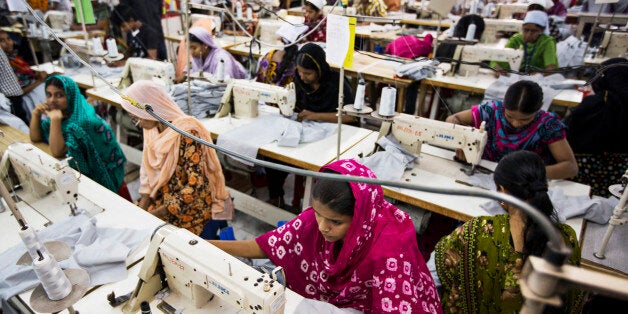
I'd like you to do us a quick favor for the purpose of this post: add up the cost of everything you're currently wearing. It doesn't need to be exact, just a close approximation.
Now, this amount could vary pretty widely, depending on whether you're reading this at home, at work, or while trying on a tuxedo. Let's pick a nice, round number for the sake of this example and say you're wearing $200 of clothing.
I'd like to ask you one more favor: in terms of dollars and cents, add up the cost of a human life.
Well, that got serious rather quickly, didn't it? Buying clothing isn't exactly a life-or-death experience for Americans, as we often head to malls and retail chains to buy new clothes without thinking much about where they come from or the lives they impact. This April, the catastrophic collapse of the Rana Plaza, a garment factory in Savar, Bangladesh served as a sobering wake-up call to remind us of the real cost of our clothing.
The factory produced clothing to be sold at well-known retailers, including jcpenney, Walmart and Dress Barn, to name just a few. Prior to collapsing, the condition of the factory had been referred to as sub-standard at best, a death trap at worst. With a death toll of 1,126, it's hard to argue with labeling the factory, which was known to be a disaster waiting to happen, as just that: a death trap.
Why did production in such a factory continue to go on even though conditions were known to be dangerous? As you can likely guess, the reasons were purely financial. CNN estimates that clothing production in Bangladesh is around four times cheaper than in the U.S, with a denim shirt used as an example.
As CNN's graphic illustrates in the link above, producing garments abroad is the way to go if you're concerned only with saving money. As sad as it is to admit, clothing retailers in the U.S. are far more concerned with their bottom lines than with the lives of those who work in their factories: factories like the Rana Plaza in Bangladesh, where the walls contained cracks so significant that the police had ordered an evacuation -- an evacuation that would have saved 1,126 lives.
What can we do as consumers of clothing to prevent further loss of life from our demand for fashion? One way is to shift toward buying clothing that is sustainably produced. Clothing companies like H&M offer sustainable fashion lines that are produced with the environment and human lives in mind.
We can also reuse clothing whenever possible. Reusing just one t-shirt prevents the emission of 7 pounds of carbon dioxide, as well as the use of 700 gallons of water and 1/3 pound of pesticides. What's more, reusing a t-shirt reduces the need for new garments to be produced in sub-standard conditions like Rana Plaza in Bangladesh.
Next time you get dressed, add up the cost of your clothing once more. This time, however, do something different: Look at the tag on each garment and see where it was produced. It might be Bangladesh, Vietnam, China, or somewhere else, but wherever it is, don't just think of it as some far-off country. Think of it as a place where people live and work, and at some point down the road when you decide you no longer want to wear the garment, don't be so quick to throw it away and buy a new one. Much more than a few dollars is at stake.